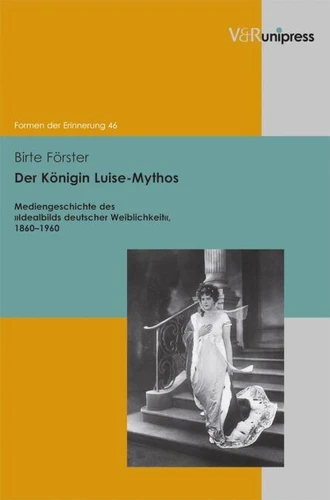Der Königin Luise - Mythos. Mediengeschichte des »Idealbilds deutscher Weiblichkeit«, 1860–1960
Par : , ,Formats :
Disponible dans votre compte client Decitre ou Furet du Nord dès validation de votre commande. Le format PDF est :
- Compatible avec une lecture sur My Vivlio (smartphone, tablette, ordinateur)
- Compatible avec une lecture sur liseuses Vivlio
- Pour les liseuses autres que Vivlio, vous devez utiliser le logiciel Adobe Digital Edition. Non compatible avec la lecture sur les liseuses Kindle, Remarkable et Sony
 , qui est-ce ?
, qui est-ce ?Notre partenaire de plateforme de lecture numérique où vous retrouverez l'ensemble de vos ebooks gratuitement
Pour en savoir plus sur nos ebooks, consultez notre aide en ligne ici
- Nombre de pages492
- FormatPDF
- ISBN978-3-86234-810-7
- EAN9783862348107
- Date de parution14/09/2011
- Protection num.pas de protection
- Taille4 Mo
- Infos supplémentairespdf
- ÉditeurV&R Unipress
Résumé
Queen Louise of Prussia (1776-1810) was known as the epitome of German femininity. As the author demonstrates, the historical myth surrounding her combined gender construction with nationalism. The author not only describes how interpretive patterns of nationalised femininity were presented in the popular entertainment media between 1860 and 1960, but also explains their societal significance and scope.
Possible interpretative receptions of especially popular portrayals are included in the analysis, as are the regional and confessional distribution of the the myth and its institutional anchoring in schools. Ceremonial acts, the unveiling of memorials as well as the activities of the Queen Louise League show the appropriation of Queen Louise and social practices by specific groups. This is the first historical study of the Queen Louise myth that takes into account its addressees and their respective interpretations, its representations in the media and its social, regional and confessional distribution.
Possible interpretative receptions of especially popular portrayals are included in the analysis, as are the regional and confessional distribution of the the myth and its institutional anchoring in schools. Ceremonial acts, the unveiling of memorials as well as the activities of the Queen Louise League show the appropriation of Queen Louise and social practices by specific groups. This is the first historical study of the Queen Louise myth that takes into account its addressees and their respective interpretations, its representations in the media and its social, regional and confessional distribution.
Queen Louise of Prussia (1776-1810) was known as the epitome of German femininity. As the author demonstrates, the historical myth surrounding her combined gender construction with nationalism. The author not only describes how interpretive patterns of nationalised femininity were presented in the popular entertainment media between 1860 and 1960, but also explains their societal significance and scope.
Possible interpretative receptions of especially popular portrayals are included in the analysis, as are the regional and confessional distribution of the the myth and its institutional anchoring in schools. Ceremonial acts, the unveiling of memorials as well as the activities of the Queen Louise League show the appropriation of Queen Louise and social practices by specific groups. This is the first historical study of the Queen Louise myth that takes into account its addressees and their respective interpretations, its representations in the media and its social, regional and confessional distribution.
Possible interpretative receptions of especially popular portrayals are included in the analysis, as are the regional and confessional distribution of the the myth and its institutional anchoring in schools. Ceremonial acts, the unveiling of memorials as well as the activities of the Queen Louise League show the appropriation of Queen Louise and social practices by specific groups. This is the first historical study of the Queen Louise myth that takes into account its addressees and their respective interpretations, its representations in the media and its social, regional and confessional distribution.




